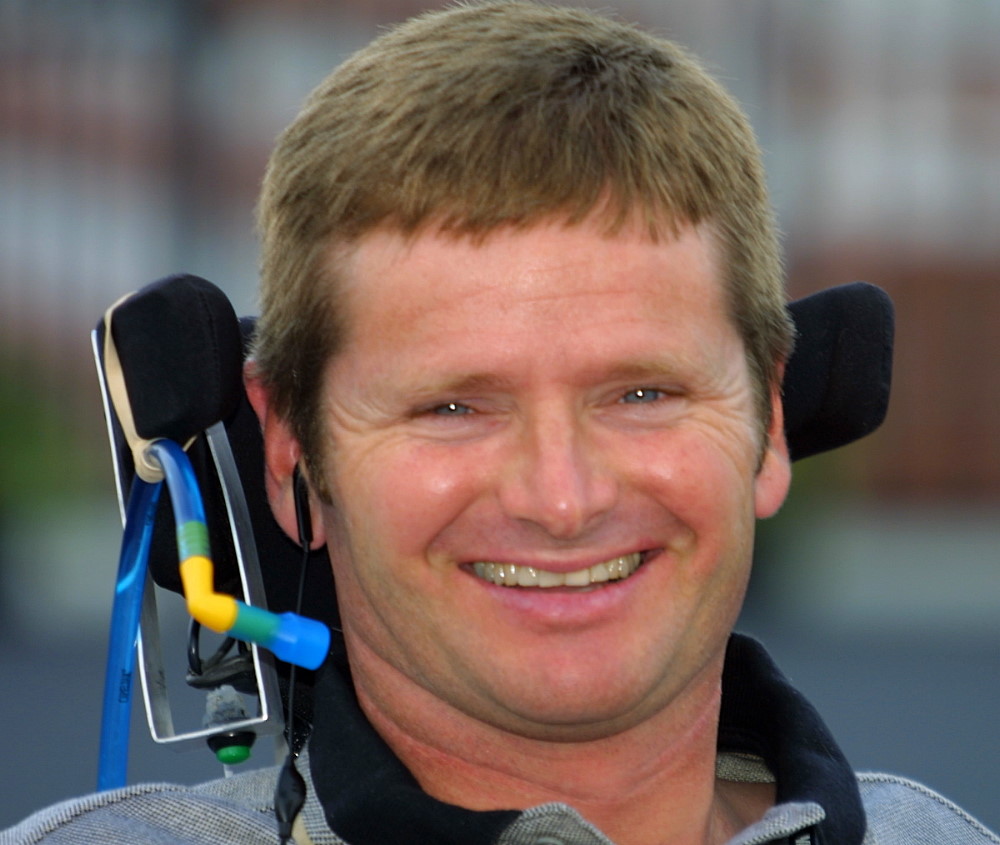IndyCar owner Sam Schmidt chosen to unveil innovative hand, foot-free Corvette
 |
| Sam Schmidt |
A 1999 IndyCar sits inside Sam Schmidt’s Las Vegas-area home. One day, Schmidt, who is a quadriplegic, hopes to drive it again. The notion is not as far-fetched as it might seem.
Schmidt already has started driving a passenger car again. He will get to publicly display his prowess later this month at Indianapolis Motor Speedway when he helps unveil an innovative technological achievement.
A black 2014 Corvette C7 Stingray has been fitted with advanced electronics and a human-to-machine interface to allow people with disabilities similar to Schmidt’s to drive solo.
It’s being called the SAM Project — semi-autonomous motorcar.
No hands or feet are required to drive it.
“Just use my head," said Schmidt, a former Verizon IndyCar Series race winner. “Some would say it’s the first time I’ve done that."
In January 2000, Schmidt crashed during an IndyCar test session at Walt Disney World Speedway in Orlando, Fla. He spent six months in a St. Louis rehabilitation center. To this day, pursuit of life skills remains a daily challenge, the result of the severe spinal cord injury he suffered.
A nurse comes each morning to help him with showering, shaving and therapy. Schmidt rides an electronic bike every other day. He uses a walking chair. He pushes himself.
Years ago, Schmidt learned to use a self-guided wheelchair. He’s so proficient at it now that he can verbally text and drive. When recently approached about piloting a car for the first time since the accident, he figured that was the next logical step.
Now comes the hard part: Performing in front of an audience.
“If you look closely at the walls around this house you’ll see the marks (of the wheelchair)," he said, laughing. “You wouldn’t want me driving."
But this Corvette is remarkably sophisticated. Through a collaboration among Arrow Electronics, Ball Aerospace and Technologies Corp., Falci Adaptive Motorsports and Schmidt’s IndyCar team, Schmidt Peterson Motorsports, it’s a sight to behold.
Four sensors on the headwear transmit information to infrared cameras on the dashboard. Head tilting dictates steering and acceleration in 10 mph increments.
A bite sensor slows the car. GPS technology prevents movement within 1.5 meters from virtual curbing and within a 10-meter steering width.
If all that fails, engineers can take over the car.
“I had two requirements, and the first was to stay safe," said Schmidt, who has twice tested the car at IMS. “The second was that I had to be the one driving the car."
Schmidt added a third stipulation if he was going to be driving at IMS, where he raced in three Indianapolis 500s and led four laps of the 1999 race before crashing in Turn 1.
“I must average over 100 mph," he said. “(The engineers) laughed."
Appropriately, Schmidt is scheduled to be on the clock at IMS on Sunday, May 18, which will be pole day. More at IndyStar
